#fiametta
Text
Not sure if anyone’s said this yet but now that we have Laterano events plural I’m fascinated by their (imo) very deliberate choice of protagonists, and there are almost a couple of layers of narrative going on there. I struggle a little figuring out how to get this into words but specifically I think they’re chosen to be people who can carry a narrative without contradicting the orthodox morals of the church. There’s a LOT of vaguely anti-authoritarian rambling below the cut so please kindly bear with me and my English major brain.
I can’t really start there though. One of the reasons this is so brain hurty is how deeply it’s woven into the storyline, so to start, I have to verbalize how Laterano and Arknights writing more generally is different from other, similar settings. Because like, I hear the words “morally negative church in a grimdark setting” and my brain immediately shuts off. Come on, that’s so far beyond low-hanging fruit, if you’ve seen any grimdark setting ever you know exactly what that looks like. And sure, it was fine the first two or three times you saw it, depending on your tolerance for that kinda thing, but it gets boring quick and even when it was new it was kinda uninteresting story-wise. “Religion is always fake because it inspires hope which means everyone who takes meaning from it is either a corrupt grifter or naive and misled” isn’t just edgy nonsense, it’s also basically useless as an actual critique. It tells you absolutely nothing except how to tune out a particular kind of story, and a story that tries to get you to hear less is doing its job wrong.
So, Arknights does something different. Instead of denying the premise of the church entirely, it actually takes it at its word. Laterano is, in almost every definition of the word, a paradise. It is basically unmatched in terms of actual quality of life, with its only competitors being the Durin cities and maybe Aegir, and is worlds apart from now much the rest of Terra sucks. More than that, though, the paradise is specifically tailored to the worldview of a religion with a strong central authority - when I say it takes it at its word, I mean the authoritarian bits too. Laterano is a city that lives in perfect order and peace because everyone follows the law perfectly and they all understand each other and never fight. Empathy is really important for this, as it allows for a believable amount of superhuman societal order. Laterano has very little crime, political drama, or quarrels in general. It’s the promises of a strict higher authority actually taken at face value: everyone follows the rules and that means they have effectively unfettered freedom, because they don’t want to break the rules and therefore they can do anything they want.
Laterano is specifically written to be a believable paradise in a setting that has none, so that when the story then turns around and criticizes that setting, it has significantly more weight. Even when the promises of paradise are taken at face value, there are still issues that cannot be addressed because the system is inherently flawed even in the imaginary scenario where it works. Even worse, the problems that poke holes in the imaginary perfect scenario are the same problems that they face in the real world, like “how do you deal with the interpretation of scriptures” and “hey there’s this racism thing I keep hearing about should we be worried about that or what”. Because of the way this imaginary perfect system works, we then look back on our real world in a new light and understand it a little better. It’s good critique.
Okay so how did we get here and what does this have to do with the protagonists? Well, this starts with Fiametta in Guide Ahead, because she’s a really weird protagonist. This is a cold take at this point but despite being the character on the front of the box, she has very little to actually do with the central conflict of the event. Most of the conflict is handled by Ezell first and Andoain second, and Fiametta mostly putters around putting holes in people until the finale where Andoain receives the answer he’s been looking for, he turns to explain it to the world, and he runs into the only person in the whole of Laterano who does not care about his motivations or his revelation. Her role, in other words, is to replace the climax of Andoain’s story with her own, and in doing so she makes it much harder to actually get a resolution and a meaning out of the story (this should not be taken as a criticism of her character, let me cook). Guide Ahead’s ending is hazy, with only small piecemeal resolutions to its conflicts, and for the longest time that was just the way the event was written and it stood on its own.
But now, Hortus de Escapismo is out and the monkey brain see patterns. Specifically, with the choice of protagonists. Because Executor is definitely different from Fiametta as a protagonist, but there’s one particularly important connection between the two, and that’s that as I mentioned in the beginning, they allow for stories don’t contradict orthodox morality. Fiametta we went over, as she’s uninterested in any of Andoain’s morality and just wants him dead. Executor, though, is purely focused on his mission and views the world through that lens. He only wants to achieve his objective, and while helping the needy is in line with the stated objectives of the church and he does do so when able, it’s secondary to his assigned task. He does change as he gets further into the story, and we’re not gonna ignore that, but we’ll be back to it later. What I mean is more that he is designed as a person who is able to lead a story that doesn’t contradict with the morals of Laterano. He sees the injustice and suffering around him, but that’s not his job, so he doesn’t need to solve it to have a complete story with a happy ending.
This is where it really gets complicated, so I apologize if I don’t explain this very well. I see this as us dealing with multiple layers of fiction: the events of the story, the perspective of the church, and our perspective as readers. Back to the first point - authoritarian institutions almost always use stories to sell people on their brand of order. Simple stories, simple enough that even calling them myths seems like overselling it a little, your “Saint George slays a dragon” kinda thing. This is the point of the second layer, the perspective of the church. I don’t really have an in-world justification for this layer - maybe you could make the argument that it has to do with Law’s perspective on things, but I don’t totally buy that - I think it’s more in a weird narrative transition space for people who don’t read very carefully. Regardless, Fiametta and Executor’s shared indifference to the questionable circumstances surrounding them is designed to let them tell a story to prop up the existing order. Their protagonist status and their missions are specifically constructed to allow them to ignore the suffering around them, and as such ignore the larger questions that might poke holes in the larger order. They’re both playing out the story of Saint George, where they go and find a bad guy and kill them and that’s all there is to it. The story is designed and told specifically for that “that’s all there is to it”.
But, as we said earlier, this is a good critique, and as such it intentionally undercuts this story with the third layer: what we actually see as readers. We are shown the suffering and the injustice, and then get to see our protagonists ignoring that to pursue their goals. This is what gives Guide Ahead’s ending its unique texture, which sets it apart from every other event with a vaguely unresolved ending. We have seen the actual issues with Laterano, and also watched our protagonist explicitly ignore them in favor of her own story. It’s unsatisfying in a way that only really makes sense to me if we as the readers have an understanding of intentional authorship. Whether it be Yvangelista XI or Law or The Actual Real Life Pope, there are issues here that we want to see a resolution to but people are choosing not to address them. Again, it’s good critique. Not only does it push the reader to unpack and understand the actual real-world technique, but it also helps blunt it. You have just seen a plot and protagonist ring uncharacteristically hollow. You then look around to see why that is, and you realize there are many things that should have been resolved that weren’t. The next time you see a story resolve with that same hollow-ness, you know where to look. Surprise! Harry Potter was propaganda the whole time. It’s okay, it was never good, you were just twelve.
I guess the last thing is where we go from here, because Executor’s story breaks this mold somewhat. In Hortus de Escapismo, he has to deal with a mission that isn’t actually bounded by his normal rules, and because of that he actually does have leeway to help the people around him. He starts as someone who is totally mission-focused, but by the end of the event he’s done a total 180 and is blocking Oren’s attack, which makes the mission harder but helps the non-mission-critical civilians of the monastery. He breaks from the rigid thinking of “kill the bad guy and that’s all there is do it”, and gives his attention to the people he isn’t supposed to see. I think this is an indication of the direction we’re going to be headed in the future with Laterano events. The events aren’t going to get better - they’re going to keep being just as morally murky and complicated as in the past - but the characters are going to get better at handling it, and when they do, they’re going to actually start to change things for the better.
Goddamn that was a lot of writing for 1 AM. I still have a. Lot of thoughts on this event with stuff like empathy and Lemuen and Federico being an autistic icon(my beloved) but I’m going to leave things there, I think, because if I write for any longer my phone is going to crash when I try to post this. Anyway if you actually made it to the end thanks for listening to me rambling and I hope that made sense. Cheers.
#arknights#arknights thoughts#hortus de escapismo#laterano#fiametta#executor arknights#I deadass had to ask folks to proofread this one#to make sure I didn’t sound like I didn’t sound off my rocker#also don’t mind my random Harry Potter slander that’s an entirely different rant
323 notes
·
View notes
Text

★ 【ナツバ】 「 フィアメッタとモスティマ 」 ☆
✔ republished w/permission
⊳ ⊳ follow me on twitter
168 notes
·
View notes
Text


it's not "i will sodomize and face fuck you" but "crucify yourself" is also pretty funny
738 notes
·
View notes
Text
Dark Souls 3 with fia knight skin the ashen one and mos priest skin as the fire keeper
62 notes
·
View notes
Text

300 notes
·
View notes
Note
if you're open for arknights requests, would it be okay to ask for fiammetta/exusiai?

I never really considered them much before this, but they're cute actually.
#arknights#fiametta#exusiai#req#art#fiaexu#just a scratchy lil thing of them#love this angry ass bird and her angel
37 notes
·
View notes
Text
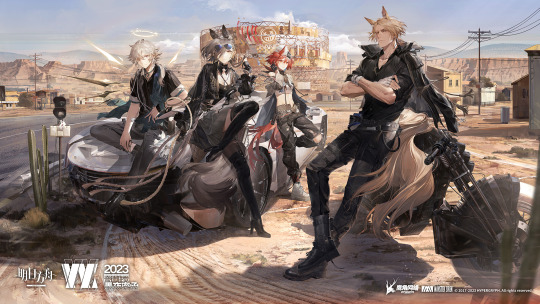
I fucking love this artwork. You see these characters, dressed and posed like that, and you think, "Wow, these characters must be like, cool, swave, bikers or something." Only they're an old office worker, a parole office, a judge, and a civil servant. They all work with a pharmaceutical company with a private military. Excellent, no notes.
#arknights#Mlynar#fiametta#penance#enforcer#I know they all have something more going on#but that has nothing to do with their occupations#like Mlynar has something going on with the armorless union#and fia has her lust for vengance#and Penance is a judge in a country ruled by the mob#and Enforcer is the care taker to arknight's Martin Luther#who is a tiny child#he's also been cut off from the Sankta hivemind despite not being fallen#I fucking love Laterano lore#it's just buck wild
132 notes
·
View notes
Text
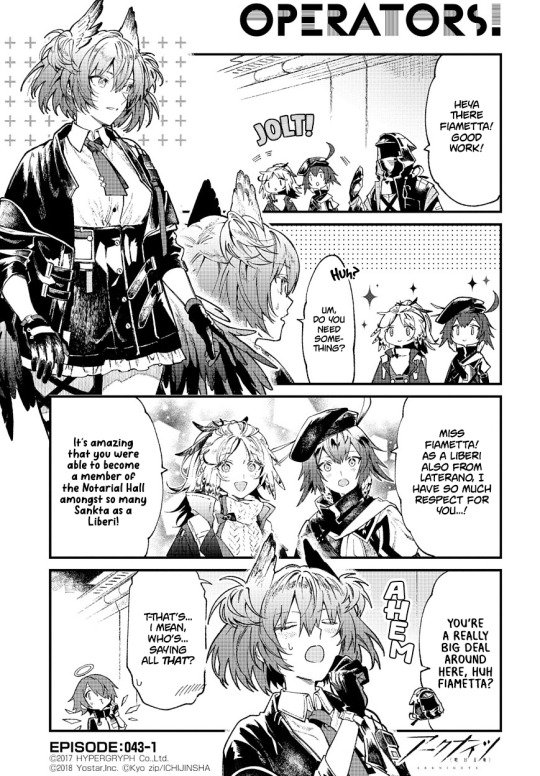


OPERATORS! Chapter 43: Fiametta. Also available on MangaDex.
#arknights#manga translation#operators#pinecone#plume#fiametta#mostima#kroos#fang#beagle#liskarm#franka
36 notes
·
View notes
Text

Oh no, cringe!
49 notes
·
View notes
Text
hey did you wanna see fiametta lay an egg what am i saying of course you did
12 notes
·
View notes
Text
Given how Arknights is famous for the nonsensical codenames its operators have ranging from Rockrock, Cement, Asbestos, etc.
The one character who is introduced as having multiple increasingly stupid codenames (Suffering?, with the “?” being part of the codename), upon being made a playable operator
Goes by her actual first name.
30 notes
·
View notes
Text
Lemuen once called Fiametta her discord kitten as a joke but Fiametta actually got turned on by it
Knowing this about herself is why she takes constant burn damage
#nsft#Fiametta#Character who I love on a deep level but is also unfortunately#REALLY entertaining to clown on
23 notes
·
View notes
Text

Nian asked her if Matrix Reloaded is "Peak Cinema" or not
31 notes
·
View notes
Text
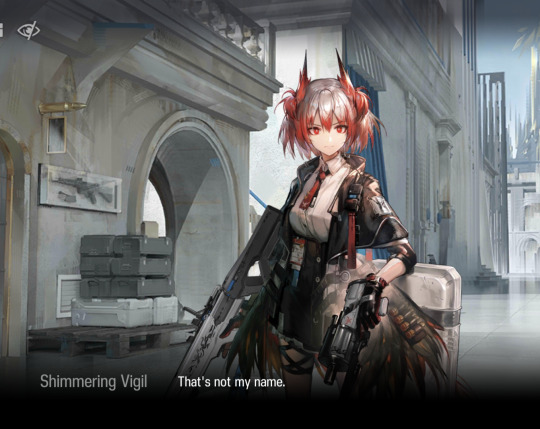
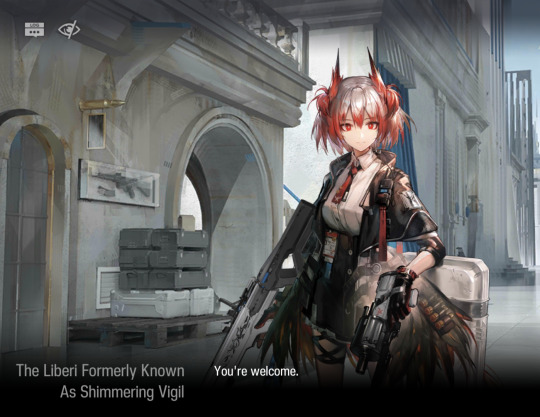
talent one: suffering
1K notes
·
View notes
Text
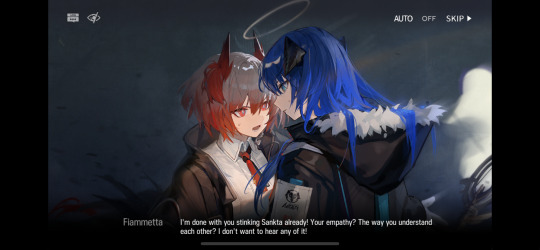



I really like Fiametta and Mostima's contrasting colors and how they seem to represent the two of them.
Fiametta has red hair, which is typically associated with anger, whereas Mostima has blue hair, which feels more associated with being cool and collected.
Like, I like how their designs tie into their characters when contrasted here.
And I love seeing Fiametta just yell at Mostima, asking her why she's not mad, yelling at her to stop acting like nothing matters like she always does.
16 notes
·
View notes
